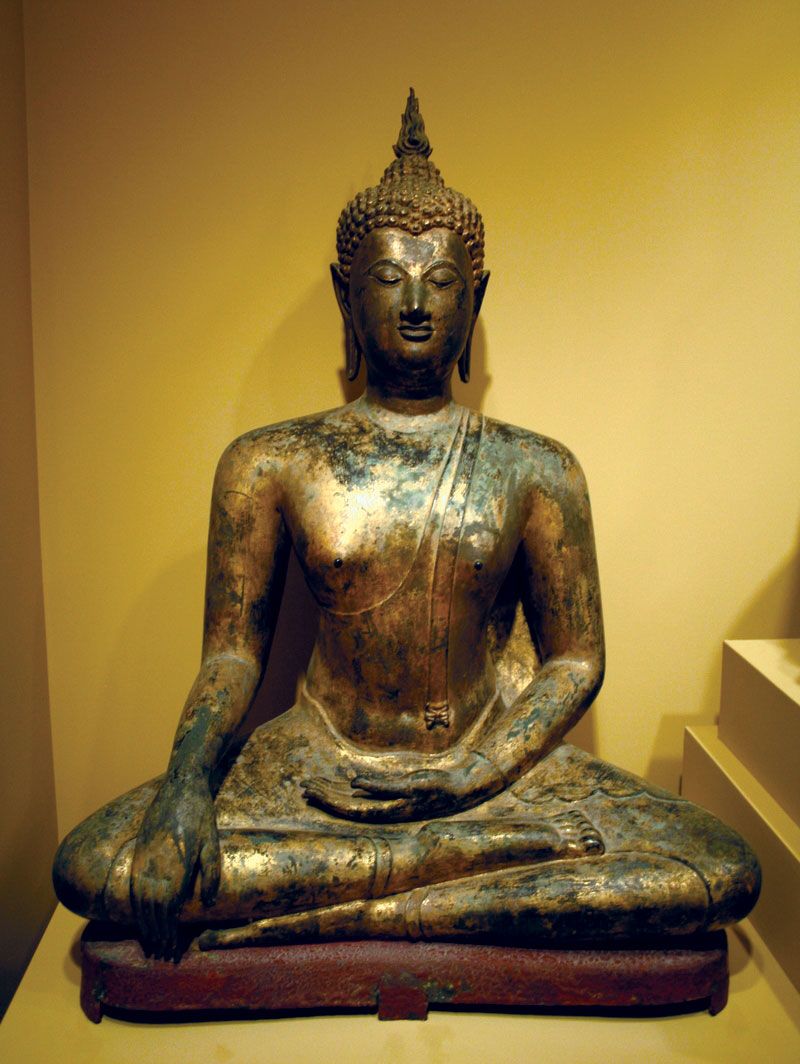The teachings of the Bahá’í Faith encompass a multitude of perspectives on religious figures from various traditions, aimed at fostering unity among diverse belief systems. Central to this dialogue is the fascinating consideration of the Buddha, an iconic figure in the spiritual landscape of humanity. The fundamental query arises: was the Buddha merely a man, or was he a Manifestation of God? This inquiry invites a profound investigation into the nature of divinity, the characteristics of a Manifestation, and the implications of perceiving the Buddha through a Bahá’í lens.
To embark on this examination, one must first delineate the concept of a Manifestation of God as understood in the Bahá’í teachings. Manifestations are divine teachers appointed by God throughout history to inspire humanity, impart divine knowledge, and guide people toward spiritual awakening. They embody divine attributes to a unique extent and, through their lives and teachings, serve as intermediaries between the human and the divine. Thus, the inquiry surrounding the Buddha’s status hinges upon understanding the essence of his teachings and the transformative impact he had on millions worldwide.
The historical figure of the Buddha, born Siddhartha Gautama in the 6th century BCE, embarked on a momentous journey of self-discovery that led him to a profound awakening. His quest for enlightenment, propelled by an acute awareness of suffering, culminated in his realization of the Four Noble Truths and the Eightfold Path. These teachings are not mere philosophical constructs; they constitute a systematic approach to transcending human suffering and achieving spiritual liberation. The core essence of his teachings resonates harmoniously with the Bahá’í principles of unity, justice, and the intrinsic potential of every individual to achieve a higher state of consciousness.
From a Bahá’í perspective, viewing the Buddha as a Manifestation of God underscores the universality and continuity of divine revelation. The teachings of the Buddha transcend regional and temporal limitations, inviting adherents to explore the depths of their spiritual consciousness. He encompasses qualities such as compassion, wisdom, and detachment—attributes that reflect the divine nature articulated in Bahá’í texts. This recognition affirms the inherent similarity among the teachings of all Manifestations, emphasizing that truth is multifaceted and may manifest in various cultural expressions.
Engaging with the Buddha exclusively through a lens that solely acknowledges his humanity risks minimizing the profound spiritual contributions he made. While it is imperative to honor his human experiences and the historical context in which he lived, it is equally essential to recognize his role as a spiritual leader whose teachings resonate with the fundamental truths that lie at the heart of all great religions. The qualities he embodied serve as a spiritual blueprint that echoes the principles espoused by subsequent Manifestations, including Baha’u’llah, the founder of the Bahá’í Faith.
Furthermore, the Bahá’í teachings emphasize the significance of independent investigation of truth. Thus, individuals are encouraged to explore the essence of Buddhist philosophy and practice through direct engagement with its teachings, rather than solely through the interpretations of others. This exploration cultivates a deeper appreciation for the Buddha as a figure who, both as a man and as a Manifestation, illustrates the potential for transformative spiritual realization inherent within each individual.
The lens of the Bahá’í Faith introduces an intriguing multifaceted understanding of enlightenment. Enlightenment, as envisioned by the Buddha, encompasses the awakening to true reality, transcending the illusions and attachments that often ensnare the human spirit. In this way, the aspiring seeker can witness parallels in the Bahá’í teachings, where the emphasis on spiritual development materials into awareness of one’s purpose and the interconnectedness of all creation. The outlook thus promotes a broader comprehension of life’s ultimate purpose—serving the betterment of humanity and fostering unity among all peoples.
Moreover, it is noteworthy that the Buddha’s teachings on compassion echo the Bahá’í principle of service to others. The cultivation of compassion—an essential aspect of the Enlightenment path—represents a convergence of purpose between the two belief systems. Each individual has a role in alleviating suffering, advocating for justice, and fostering love among humanity. When one contextualizes the Buddha not merely as a historical figure but as a pivotal Manifestation of God, it prompts an evaluation of the responsibilities held by followers of all faiths. Such a perspective engenders a commitment to moral and ethical conduct that transcends individual beliefs.
In summary, the inquiry into whether the Buddha is regarded as a man or a Manifestation of God illuminates significant themes within the Bahá’í framework. This exploration elevates the discussion beyond historical contexts, encouraging individuals to perceive the Buddha’s teachings as an integral part of a universal tapestry of divine guidance. Ultimately, recognizing the Buddha as a Manifestation fosters a seismic shift in perspective—one that piques curiosity and beckons adherents from all walks of life to delve deeper into the spiritual bounty that lies within the shared heritage of humanity’s quest for truth.
By embracing this expansive understanding, followers of the Bahá’í Faith and other spiritual seekers can draw inspiration from the Buddha’s life and teachings, integrating his wisdom into their spiritual journeys. This journey towards unity and understanding transcends the limits imposed by cultural boundaries, nurturing a sense of solidarity among humanity as it aspires towards a common goal of spiritual enlightenment and transformation.
